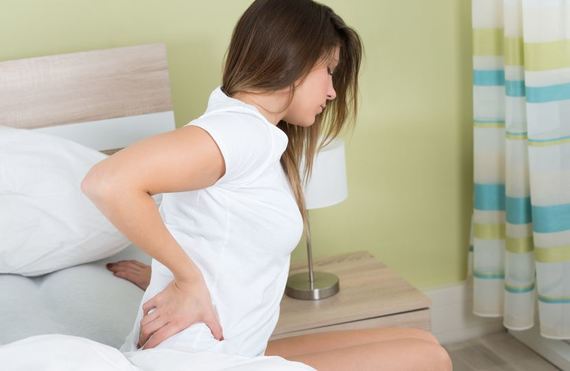How to sleep with a bad back
Filed under:
Guest Bloggers

We don't often realise how much we use our backs until pain appears; back pain can severely impact on quality of life making it difficult to move, bend, dress cough, sneeze or even laugh.
In 2010, it was estimated that 395,000 adults had experienced back pain in the previous 12 months. 27% of those who claim income support do so for back pain.
It occurs most commonly in those aged 30 to 50 and in men and women equally. Leading a sedentary lifestyle, being obese, poor posture or heavy lifting makes pain here more likely.
Simple back strain is usually treated with a combination of pain killers and physiotherapy sessions. These can help reduce discomfort. Simple exercises like walking or swimming can be beneficial.
Pilates can be especially helpful in those with a tendency to lower back pain. If there is a lot of muscle spasm, applying ice or heat packs or having a warm bath can help these relax.
Bedtime can be especially difficult for those with back pain. The simple acts of getting in and out of bed and turning over can be a trigger for severe pain. A study of over 3,000 people published in 2014, showed that more than 32% of people with lower back pain suffered from a disturbed night’s sleep, waking more than twice a night.

Getting in and out of bed:
Having an old or inappropriate bed and pillow will most certainly help with prolonged back pain, and are sure signs that it may be time for a change.
Prolonged bed rest is no longer recommended but a good night’s sleep remains as important as ever.
If you have back pain try sitting on the side of the bed before lying down. Then ease yourself slowly onto your side.
Reverse this process when getting out of bed slowly pushing yourself from your side to a sitting position. If you sleep on your side try keeping your legs bent and put a pillow between them.
Avoid allowing your top leg to go over your bottom and consider putting a rolled up towel under your waist. If you are back sleeper put a rolled up towel under the small of your back and place a pillow under your knees - this will provide additional support.
Stomach sleeping is the worst possible position for back pain as it flattens the natural curve of your spine and requires you to sleep with your neck rotated. If you must sleep this way put a pillow under your stomach and pelvis to ease pressure on your spine.
Purchasing a mattress to help sleeping with back pain:
There is no hard and fast rule when it comes to selecting a mattress - personal preference is key. Some prefer a firm mattress while others prefer it softer. It is important to ensure it is well constructed to provide adequate support for your size and weight.
Buy from a reputable source and try out the bed before purchasing. Pay attention to your pillow choice as a good pillow will support your neck and shoulders easing strain on the neck and back.
Dr. Nina's tips:
As in many chronic conditions, prevention of relapse is key:
- Always stretch before exercise
- Avoid heavy lifting and use appropriate lifting techniques
- Maintain good posture when sitting and standing
- Avoid wearing high heeled shoes
- Aim to achieve a normal weight as any excess will strain your spine
- Make sure you have plenty of calcium and vitamin D in your diet, to support bone health
For information on King Koil’s collection of Chiropractor endorsed beds that offer healthy body support and are designed to assist those sleeping with a bad back, visit here.
Dr Nina Byrnes is a well-known and respected GP and media medical expert. She has appeared on our screens as co-presenter of the RTÉ series Health of the Nation. She is the resident GP on Tubridy on RTÉ 2FM and writes a weekly health column for the Irish Independent.

















